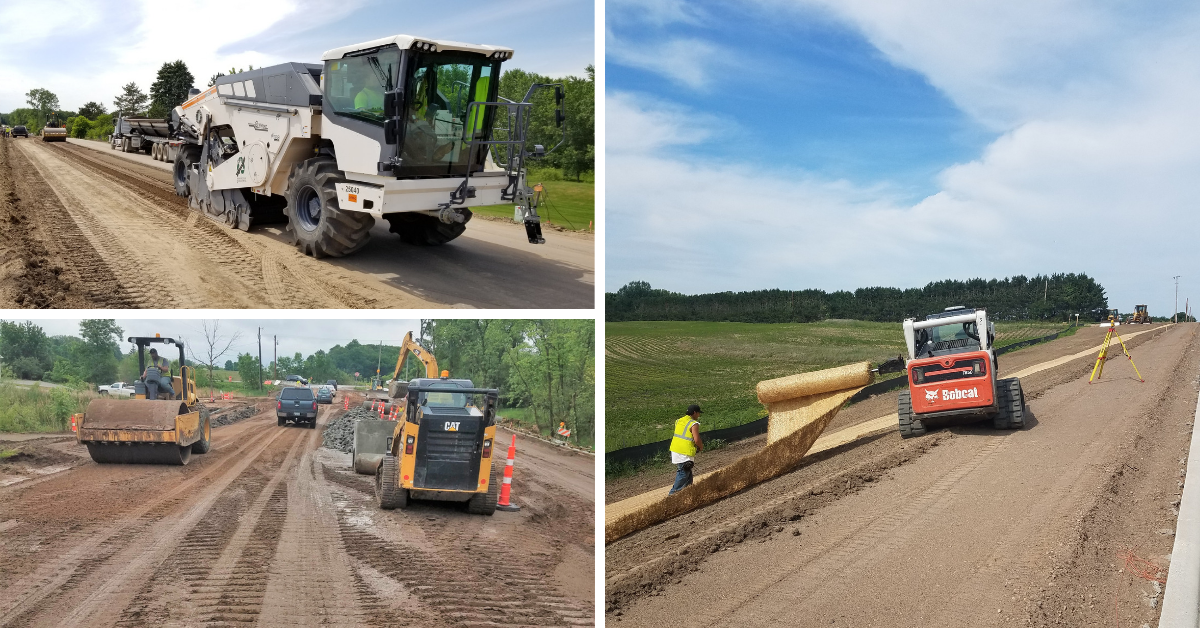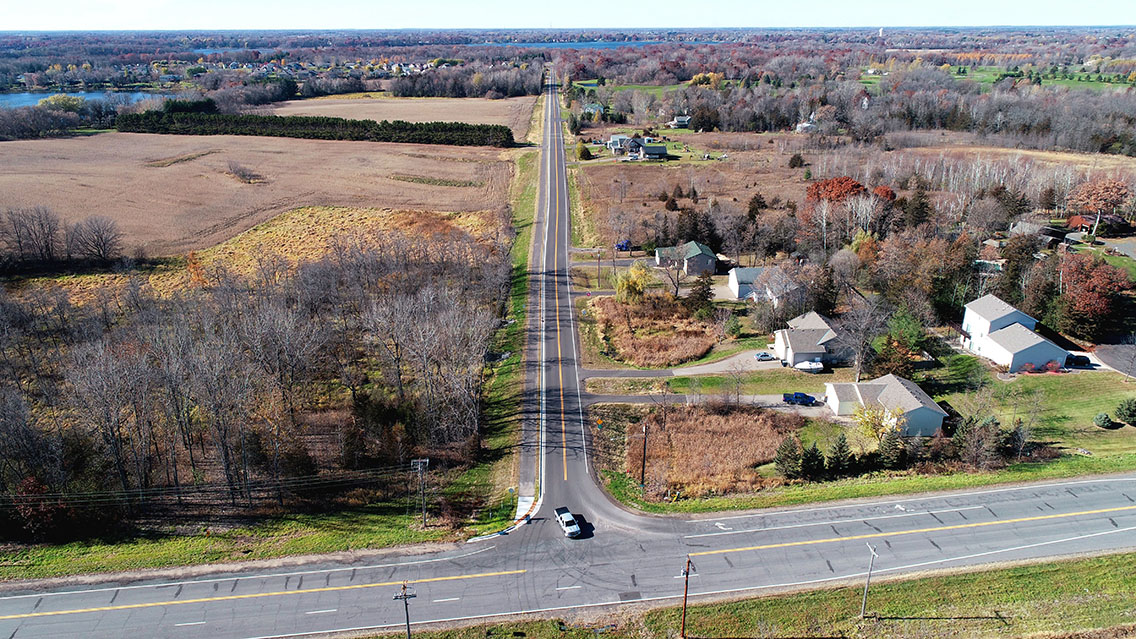Safe, multi-modal access
The quaint City of Lindstrom, Minnesota—officially Lindström—is also known as “America’s Little Sweden” and is located just 35 miles northeast of the Twin Cities metro. The City was looking to provide pedestrian access and a multi-modal trail to a land-locked development that was bursting with young, active families. The Lakeside Woodlands development is nestled between two lakes and a golf course, connected by a single route – 288th Street. Although this route has been used extensively by pedestrians and cyclists, the corridor was very dangerous due to an insufficient 1-foot shoulder between the drive lane and steep side slopes leading down to the adjacent ditches.
The City hired MSA to design a three-quarter-mile trail and street segment. During construction, deep pockets of muck were identified and removed to support the reconstructed street and new 8-foot-wide trail. New ADA accommodations were implemented at the Lakeside Woodlands development and at the east end of the trail at Olinda Trail/CSAH 25. MSA worked with the general contractor to remove the muck under frozen conditions in order to minimize the traffic impacts for over 180 homes along the shores of Kroon and Chisago lakes. The project was selected to receive federal grant funding which required extensive materials testing and quantity compliance throughout construction.

The project involved improving subgrade soil conditions, installing additional storm water drainage features, adding new road shoulder and a walking/bicycling path along the south side of the street. The improvements enhanced an already wonderful area of Lindström, allowing residents to safely exit and enter the neighborhood or utilize alternative means of travel to other parts of the City. This project is the first of a multi-phased plan to extend an off-road trail that would connect this neighborhood to the City’s high school and downtown area.
The project was sponsored by Chisago County and oversaw by the MnDOT State Aid – Metro district. The trail was designed and built to comply with Minnesota State Aid and Bikeway Facility Design Manual requirements and was funded, in part, with a $515,000 Federal Transportation Alternatives Program grant.

